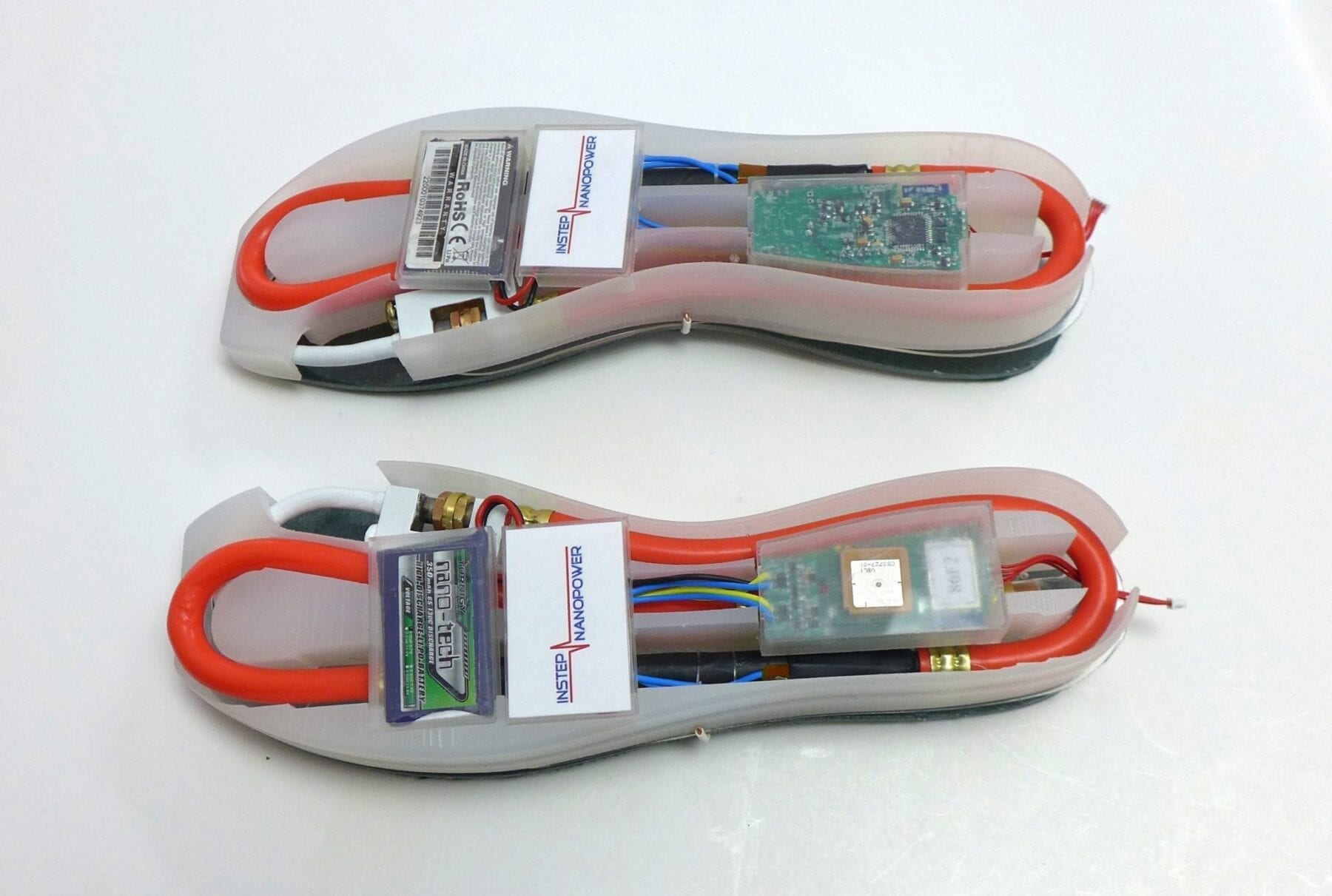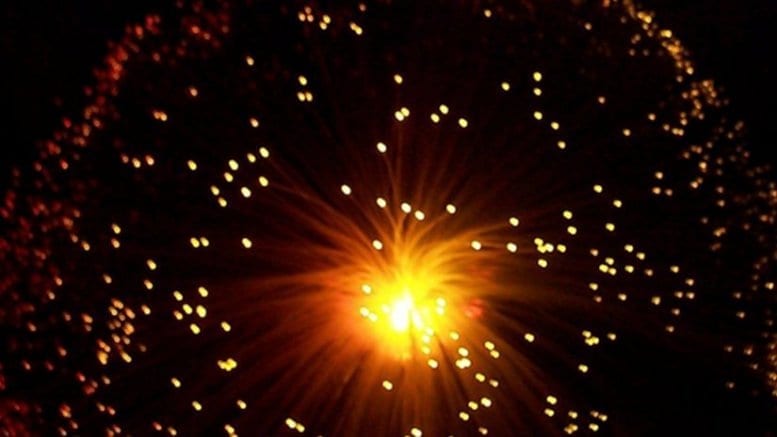
Screening large “libraries” of compounds to find those with a desired biological activity is a powerful method for discovering new drugs, but requires a large, expensive and dedicated facility.
Now, scientists at the Florida campus of The Scripps Research Institute (TSRI) have devised the central component of a screening system that would be orders of magnitude smaller and cheaper.
“We’ve developed a device that can do the functional equivalent of high-throughput compound screening on an ultra-miniaturized scale,” said the study’s principal investigator Brian M. Paegel, an associate professor at TSRI.
The advance, published recently online ahead of print in Analytical Chemistry, follows a previous study from the Paegel laboratory in ACS Combinatorial Science that described the synthesis of miniaturized DNA-encoded compound libraries. The new screening device is designed to work with the new type of library.
One-Bead, One-Compound
Current high-throughput screening systems typically occupy 10,000 square feet of space or more and cost millions of dollars. They rely heavily on robotic devices that retrieve compounds from the library, place each compound into a separate small well in an “assay microplate” and measure each compound’s biological activity—for example, whether the compound inhibits a particular enzyme involved in viral replication.
Being almost entirely automated and relatively quick, such systems can rapidly screen the tens or hundreds of thousands of compounds in a typical library. But the great cost of these high-throughput screening systems limits their use to locations at pharmaceutical companies and large research institutions. The Scripps Florida campus houses one of the most active high-throughput screening facilities outside the pharmaceutical industry.
The new approach starts with the use of “one-bead-one-compound” (OBOC) libraries, in which individual compounds are chemically attached to microscopic beads. Over the past two decades, many laboratories have begun to work with OBOC libraries of one type or another, which are so quickly and cheaply prepared and are so compact that such libraries are essentially laboratory consumables.
“It is possible to generate an OBOC library of millions of compounds in a week for about $500,” said Alexander K. Price, a senior research associate in the Paegel laboratory and lead author of the new study.
LIGHTSABR
There are considerable technical challenges involved in putting bead-borne compounds through miniature screening devices. But, as they report in their new paper, Paegel and Price were able to engineer a benchtop-scale device that meets these challenges and can screen OBOC libraries.
The device is built on the microfluidics principles that also underlie inkjet printer technology. Using a “suspension hopper,” which Paegel and Price described in a 2014 Analytical Chemistry paper, the device introduces OBOC library beads into tiny liquid droplets that contain the assay of interest, such as an enzymatic activity assay. The volume of these assay droplets is about 100,000 times less than the volumes used for high-throughput screening assays.
The device then frees each compound from its bead with a photochemical reaction induced by ultraviolet (UV) light and, after an appropriate period of incubation, records the result in each droplet.
Dubbed LIGHTSABR (Light-Induced and Graduated High-Throughput Screening After Bead Release) for its light-based cleavage of compounds from their carrier beads, the device overcomes significant technical hurdles concerning the smooth flow of droplets, the absorption of stray UV irradiation and calibration of the UV waveguide.
A key innovation is that the technique allows users to vary the UV illumination to adjust the amount of a compound cleaved from its bead—and thus adjust the dose of the compound being tested. The team successfully demonstrated this dosing function using an assay designed to find inhibitors of HIV-1 protease, a key enzyme involved in the replication of the virus that causes AIDS.
The next step for Paegel and Price is to apply the microfluidic LIGHTSABR and the laboratory’s DNA-encoded OBOC libraries. “In addition to antiviral compounds, we are also pursuing new antibiotics and other drug classes that address the emergence of resistance in rapidly evolving pathogens,” said Paegel.
“Hundreds of laboratories around the world could operate their own miniaturized screening facilities, using their own assays to go after targets that are of most interest to them,” said Price.
Learn more: Scripps Florida Researchers Develop ‘LIGHTSABR’—A Cheap, Portable Drug-Discovery System
The Latest on: Portable Drug-Discovery System
[google_news title=”” keyword=”Portable Drug-Discovery System” num_posts=”10″ blurb_length=”0″ show_thumb=”left”]
via Google News
The Latest on: Portable Drug-Discovery System
- Google DeepMind Unveils Next-Gen AI Drug Discovery Modelon May 9, 2024 at 6:08 am
The third version of the "AlphaFold" AI model will help scientists target diseases and design new medications.
- Google's New AI Predicts Molecular Behavior, Which Could Supercharge Drug Discoveryon May 8, 2024 at 2:50 pm
Google purchased DeepMind in 2014 for an estimated $400 million to $650 million to expand its AI capabilities. DeepMind made headlines for creating systems that could beat the world's best Go , chess ...
- Emerging Legal Terrain: IP Risks from AI's Role In Drug Discoveryon May 8, 2024 at 12:52 pm
This article explores the benefits and risks of AI-driven drug discovery from the legal perspective. Since the law governing IP rights in AI-driven drug discovery is still in its infant state, any ...
- DeepMind CEO Targets $100 Billion-Plus AI Drug Discovery Business With AlphaFoldon May 8, 2024 at 7:59 am
First AI-designed drugs may be ready for testing in “next couple of years,” Google’s AI boss Demis Hassabis tells Bloomberg Television ...
- Nuclera eProtein Discovery system installed at leading academic instituteson May 1, 2024 at 5:00 pm
The eProtein Discovery platform overcomes this unmet need by providing rapid access to challenging proteins in a benchtop system in less than 48 hours. Accelerating drug discovery processes by up ...
- The Difference Is the Data: Drug Discovery’s AI Revolutionon April 24, 2024 at 5:00 pm
The company’s core technology combines Elison’s ultraminiaturized chip (about the size of a nickel) with artificial intelligence (AI) tools for drug discovery. What started as manual imaging ...
- A shortcut for drug discoveryon April 24, 2024 at 5:00 pm
We hope that our catalog of small molecule-protein interactions and the associated artificial intelligence models can now provide a shortcut in drug discovery approaches," says Georg Winter.
- PHRM.6501 Drug Discoveryon April 5, 2024 at 1:09 am
Drug discovery is the translational application of biology, chemistry, medicine, business and law in the identification of new medicines. This course is designed to provide each student with a full ...
- Research in Focus: Drug Discoveryon March 26, 2024 at 2:38 am
“The success of drug discovery really depends on successful collaborations ... SLU-IDBI is also on the forefront of an entirely new drug delivery system. Silviya Zustiak, Ph.D, associate professor of ...
- Drug Discoveryon March 14, 2024 at 7:18 am
The Drug Discovery programme is Alzheimer's Society's innovative approach to dementia treatment development. The result of which means new, better treatments could be available in half the time of a ...
via Bing News











